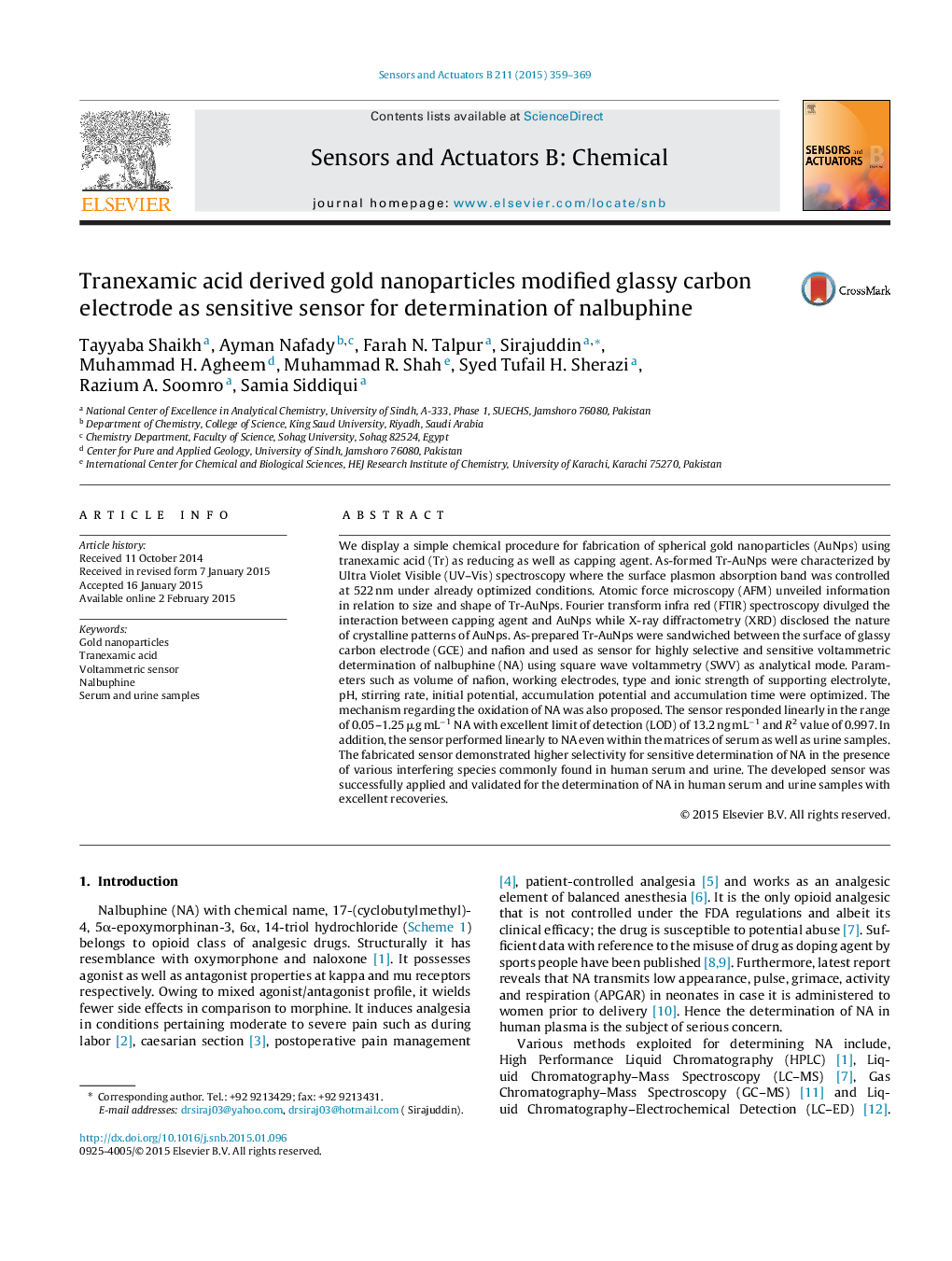| کد مقاله | کد نشریه | سال انتشار | مقاله انگلیسی | نسخه تمام متن |
|---|---|---|---|---|
| 750760 | 1462080 | 2015 | 11 صفحه PDF | دانلود رایگان |
• Facile synthesis of AuNps using tranexamic acid as reducing and capping agent.
• Characterization of synthesized AuNps.
• Fabrication of new sensor by utilizing nafion stabilized Tr-AuNps on GCE.
• Application of novel voltammetric sensor for sensitive detection of nalbuphine.
We display a simple chemical procedure for fabrication of spherical gold nanoparticles (AuNps) using tranexamic acid (Tr) as reducing as well as capping agent. As-formed Tr-AuNps were characterized by Ultra Violet Visible (UV–Vis) spectroscopy where the surface plasmon absorption band was controlled at 522 nm under already optimized conditions. Atomic force microscopy (AFM) unveiled information in relation to size and shape of Tr-AuNps. Fourier transform infra red (FTIR) spectroscopy divulged the interaction between capping agent and AuNps while X-ray diffractometry (XRD) disclosed the nature of crystalline patterns of AuNps. As-prepared Tr-AuNps were sandwiched between the surface of glassy carbon electrode (GCE) and nafion and used as sensor for highly selective and sensitive voltammetric determination of nalbuphine (NA) using square wave voltammetry (SWV) as analytical mode. Parameters such as volume of nafion, working electrodes, type and ionic strength of supporting electrolyte, pH, stirring rate, initial potential, accumulation potential and accumulation time were optimized. The mechanism regarding the oxidation of NA was also proposed. The sensor responded linearly in the range of 0.05–1.25 μg mL−1 NA with excellent limit of detection (LOD) of 13.2 ng mL−1 and R2 value of 0.997. In addition, the sensor performed linearly to NA even within the matrices of serum as well as urine samples. The fabricated sensor demonstrated higher selectivity for sensitive determination of NA in the presence of various interfering species commonly found in human serum and urine. The developed sensor was successfully applied and validated for the determination of NA in human serum and urine samples with excellent recoveries.
Figure optionsDownload as PowerPoint slide
Journal: Sensors and Actuators B: Chemical - Volume 211, May 2015, Pages 359–369
